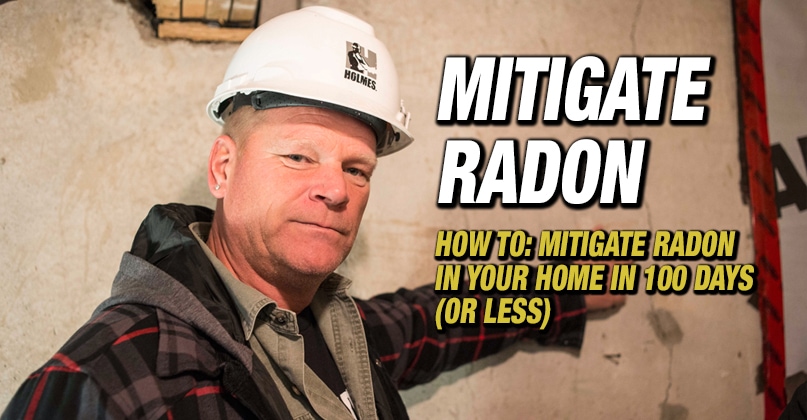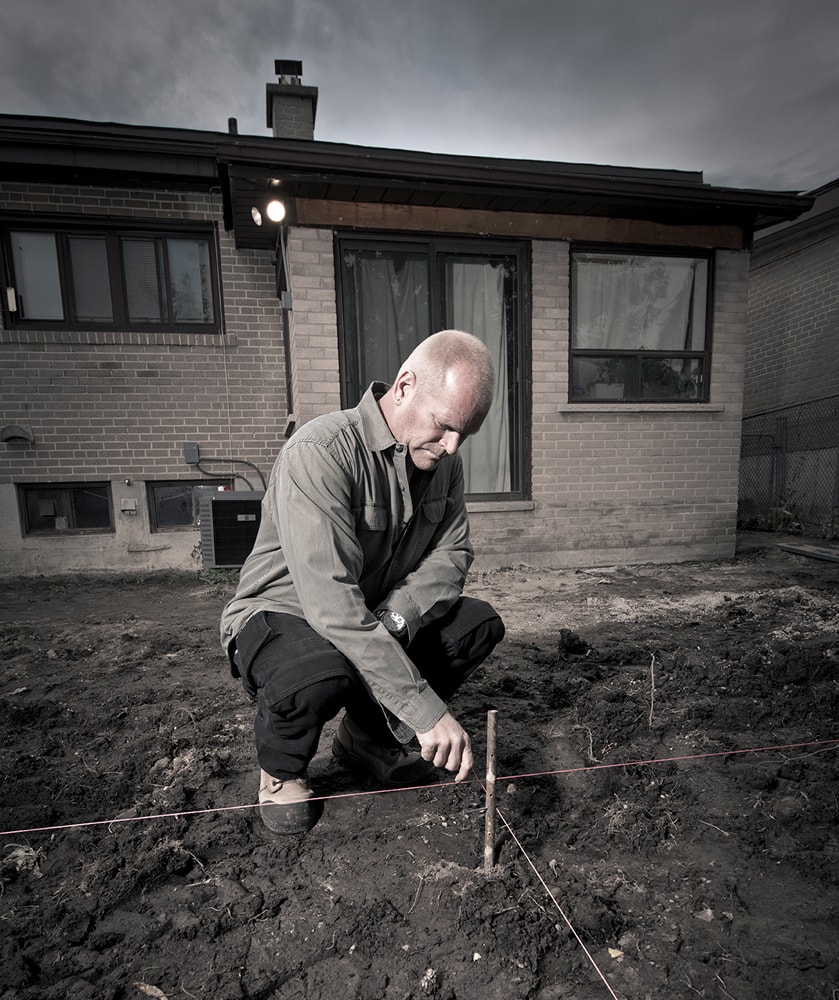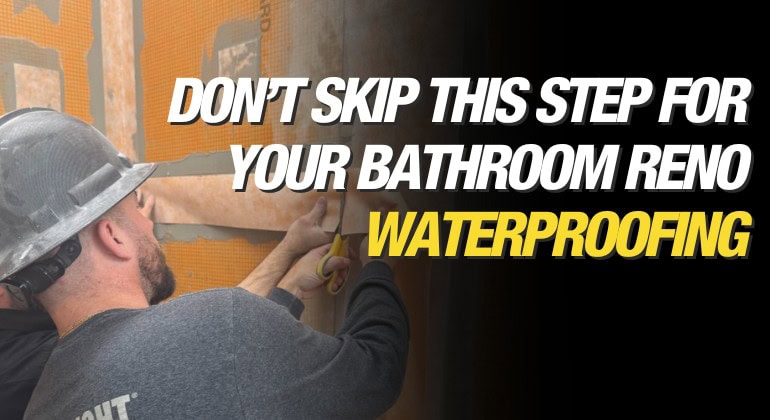Electric Storage vs Tankless vs Heat Pump Water Heater Choosing the right water heater for your home is essential for energy efficiency, cost savings, and overall convenience. Generally, all water...
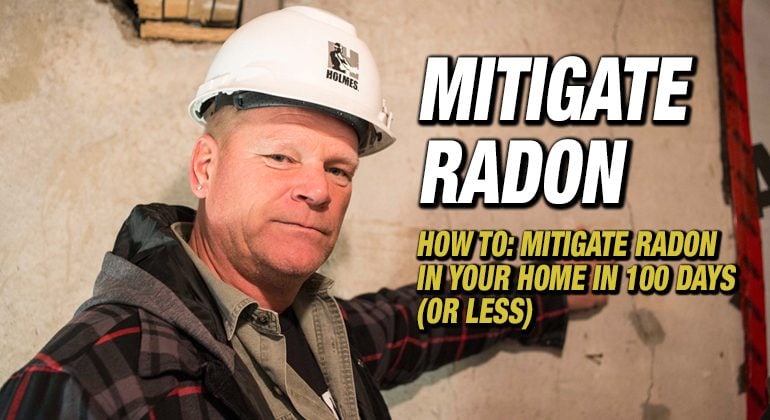
How to: Mitigate Radon in Your Home in 100 Days (Or Less)
By Mike Holmes
Mike’s Advice / Home Safety & Maintenance
Tuesday, May 18th, 2021 @ 1:05pm
What Is Radon?
Radon is a radioactive gas that occurs naturally when the uranium in soil and rock breaks down. It is colorless, odorless and tasteless. When radon is released from the ground into the outdoor air, it is diluted and is not a concern. However, it can accumulate to high levels inside your home. High radon levels can be a risk to the health of you and your family. The fact is, all homes will contain some amount of radon. The question is: how much, and how can you mitigate radon in your home?
As the leading cause of lung cancer (only behind smoking) for Canadians, long-term exposure to radon is something you should take seriously.
I don’t say any of this to scare you, but to prepare you for taking action against this potentially deadly gas. Don’t wait – test your home for radon as soon as possible. There are short-term and long-term tests available online. Or you can bring in a radon professional who will do the testing for you.
Here is a guide to remove radon from your home:
Day One: Start Your Radon Test
While there’s no bad time to test your home for radon, the winter months, when we tend to keep our homes more tightly sealed is a prime opportunity.
You’ll want to put your testing unit about 5 feet off the floor – and keep it away from any drafty areas like windows, doors, and even drains. You’ll probably want to put it on the lowest level of the home, so if you have a basement, that makes a great spot. If not, the main floor will do.
DID YOU KNOW: Radon can also seep into your home through your well water. So if you live in a home that uses a well, make sure to have your water tested as well as your air.
Visit the Testing Shop to find the right radon test for your needs.
If you’re testing your well water for a radon problem, it’s important that you send your sample to the lab quickly. It needs to be processed within two days of collection – so for safety, take your sample on a Monday, and overnight courier it to the lab so it’s there by Tuesday. The radon system that reduces radon levels in well water is called Airwell.
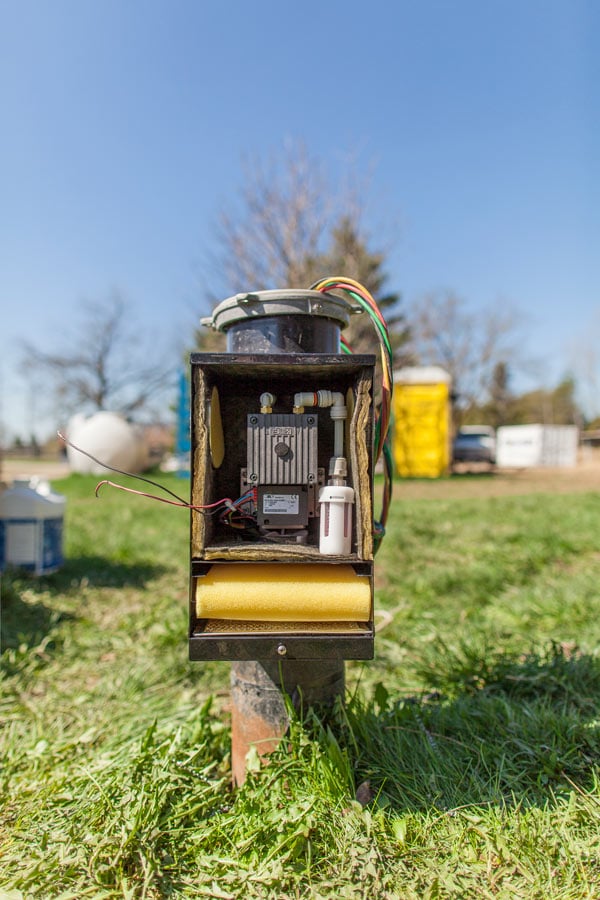
Radon Airwell to mitigate radon in ground water
How Do I Test For Radon?
There are a few ways to test:
-
Short-term DIY Radon Test Kits
A short-term test is at least 48 hours. It is important to note that levels can fluctuate with different factors and seasons, so a long-term test is ideal to determine the need for mitigation. Health Canada recommends that if you conduct a short-term radon test you follow up with a long-term test to know if you need a radon mitigation system. Make sure your tester has been approved by C-NRPP.
A short-term test is also used if you have a radon mitigation system installed. A certified mitigator does a short-term radon test to ensure the system installed is effectively removing radon in your home.
If you are purchasing a house and need to make a quick decision, a short-term test could be conducted. This can give you an idea of whether you need to budget to remove radon or not.
-
Long-Term DIY Radon Test Kits
Long term tests measure radon levels over a period of more than 90 days. Because radon is a gas, it is constantly moving, throughout the year pooling in different spots in your house and in greater or smaller quantities. This is why a long-term test is important.
-
Intelligent Radon Detector
Recently I came across a palm-sized radon detector called EcoQube. I think this is a fantastic device. You just plug it into your home and the results show up on your phone in less than an hour. The best part about this is that it is constantly monitoring your radon levels.
-
Hire a qualified home inspector who can test for radon
C-NRPP Certified professionals are certified to work in every province and territory in Canada. You can find a pro online. My Mike Holmes Inspections team also conducts radon testing.
Is A Radon Test Worth It?
Radon is the 2nd leading cause of lung cancer (after smoking). According to the EPA (US Environmental Protection Agency), radon is responsible for about 21,000 lung cancer deaths every year in the US. The only way to know if your house has radon is to test for it.
Here is more information on radon testing options.
Can I Test For Radon Myself?
Yes, you can do a radon test yourself. You can purchase a test kit online. I personally use the Testing Shop at Radon Environmental. There are short-term and long-term tests available.
You can also hire a home inspector to test for radon levels in your home. Just make sure they are certified by the Canadian National Radon Proficiency Program (C-NRPP). You can find these pros on the C-NRPP website. My Mike Holmes Inspectors can perform radon testing, including testing for other contaminants like mold and VOCs.
Day 10: Send Out Your Radon Test for Results
You’ll get a better idea of the radon levels in your home by letting the test gather samples over a longer period than a shorter period. For best results, you’ll want at least a 90-day radon test kit, but one thing to consider is running a short-term and long-term test concurrently.
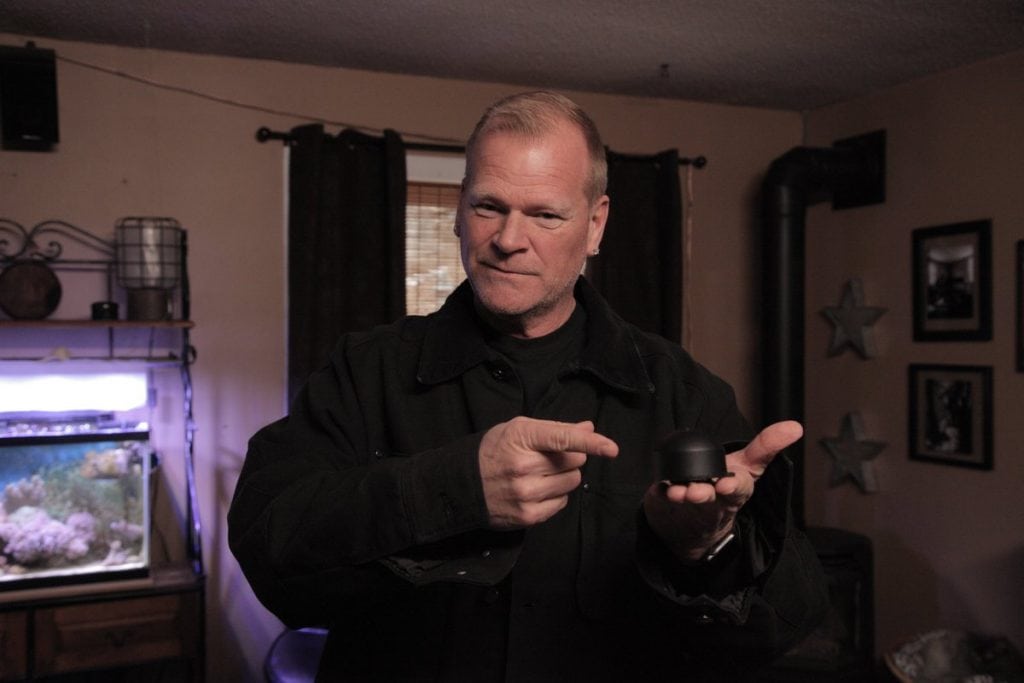
Using a rapid test kit, you can get your results after a minimum of 10 days.
This will give you an idea if more follow-up testing is needed, or that you may need to begin your mitigation efforts.
Day 30: Start Calling Your Pros to Reduce Radon
Did your first round of testing come back with some surprising or concerning results? Health Canada suggests that you take action against radon levels that exceed 200 Bq/m3. That said, even that number is a little high for me. I’d certainly take action in reducing radon levels in my home at a much lower threshold.
I suggest you call in your furnace expert to do a check of your system to ensure it’s in good shape. If your home has a heat recovery ventilator (HRV) already, you’re set and in good shape. If it doesn’t, talk to them about retrofitting your current setup to include one. In an existing home, an HRV is one of the best places to fight against radon.
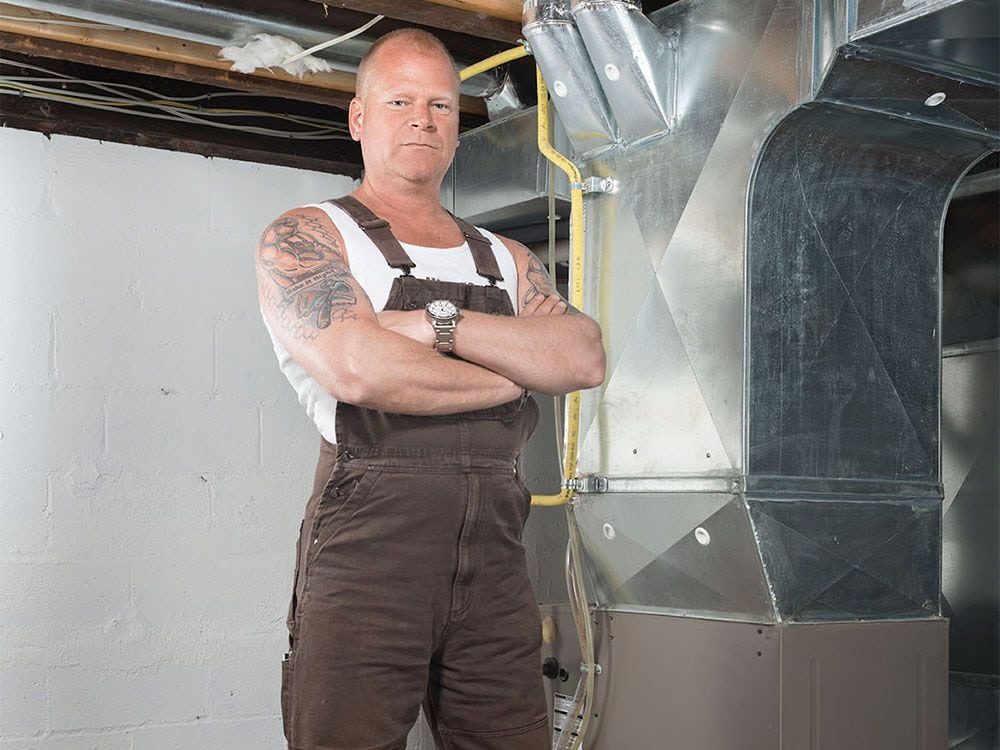
This is a good time of year to have your HVAC serviced before we get into the winter season, so ensure your system is in tip-top shape before the deep freeze hits.
RELATED
Day 90: Send Out Your Radon Test for Results
Send out your long-term radon test to confirm the results of your first rapid test.
Day 100: Install Your Radon Mitigation System of Choice
If the levels in your indoor air came back high enough to mitigate, now’s your chance to remove radon from your home.
Remember why I said back on day 30, having a working HRV was a good idea? It’s because this is truly the simplest solution to adding a radon reduction system to your home.
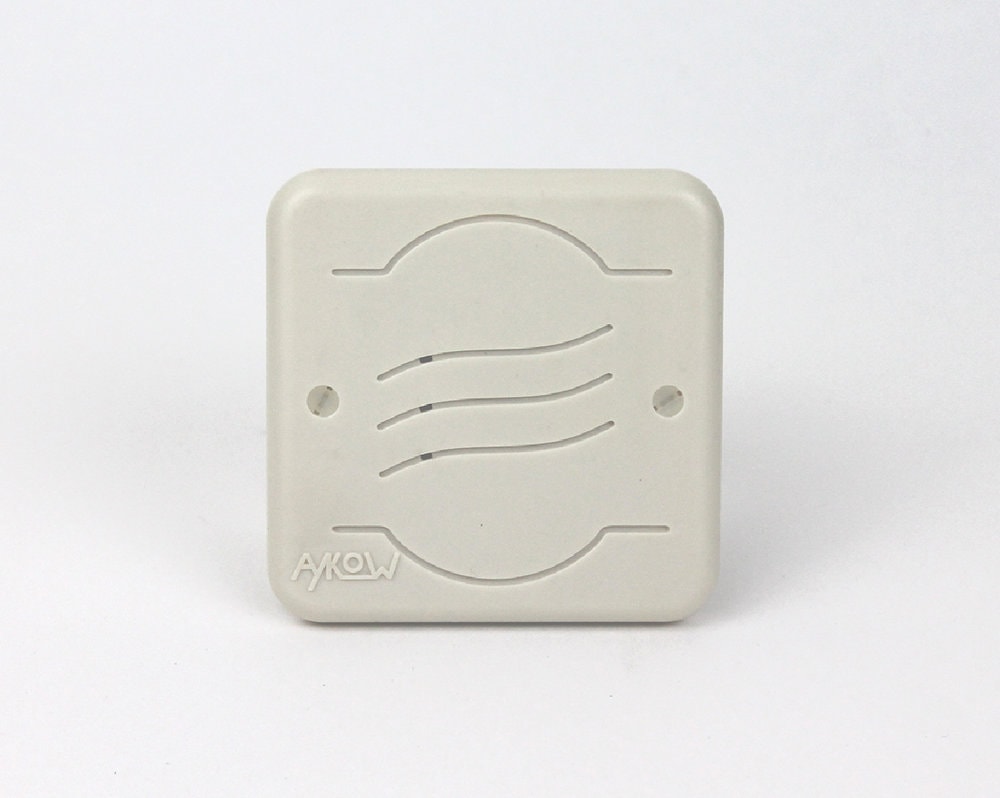
A device called a Radostat attaches directly to your HRV – and it consistently monitors your home for any spikes in radon gas.
If it detects radon peaking at dangerous levels, it will trigger an air exchange in your home. It pulls radon-infused outdoors, while fresh, new, treated air cycles through your system and redistributes back into your home.
It’s a simple device that you don’t even have to think about. Just remember that you should never turn your HRV off – it needs to be running constantly.
If your well water tested positive for radon, read this and watch the video below.
Day 730: Start your Radon Test
Health Canada suggests testing your home for radon every two years or so, to ensure that your level or radon hasn’t spiked to dangerous levels. Even if you’ve taken steps to mitigate radon in your home, for peace of mind, you should still perform another test.
Testing for and mitigating radon isn’t a large undertaking. With a little time and not much money, you can protect yourself from this potentially deadly gas. To me, it’s money that’s well spent. Put some of this year’s renovation budget toward testing for, and potentially mitigating radon in your home.
RELATED:
Where is Radon Most Commonly Found?
Radon can seep into a home through pipes, windows, sump pumps, unfinished floors, crawl spaces, cracks in foundation walls, and floors-even through foundation walls. Remember, concrete is porous and radon is a gas. That means it can penetrate through the tiny holes in a home’s foundation walls.
There is a common misconception that only homes with basements are susceptible to radon entry. That’s not true. If you have a crawl space or a home built on a slab, you better get your home tested. Radon can even enter your home through your well water. The only way to know if you have it is to test for it.
Regardless of location, the only way to know if a home contains dangerous levels of radon is to test for it. One house can have radon levels next to zero while the house next door can have levels that are off the charts.
Homeowners are encouraged to hire a professional to test for radon, such as a home inspector certified by the Canadian National Radon Proficiency Program (C-NRPP), in order to ensure accurate test results. You can also hire a home inspector who can test your home for radon.
READ NEXT:
